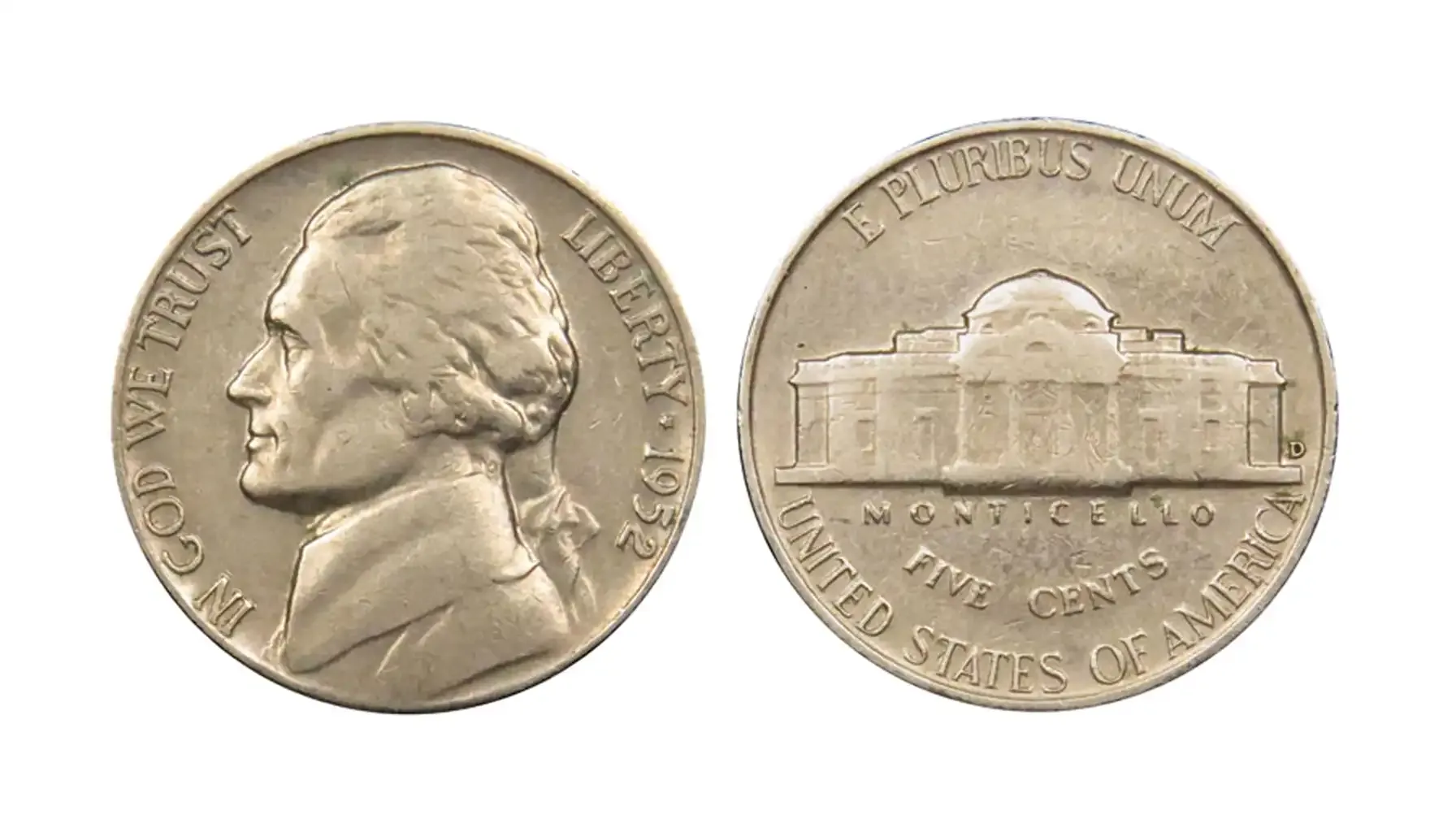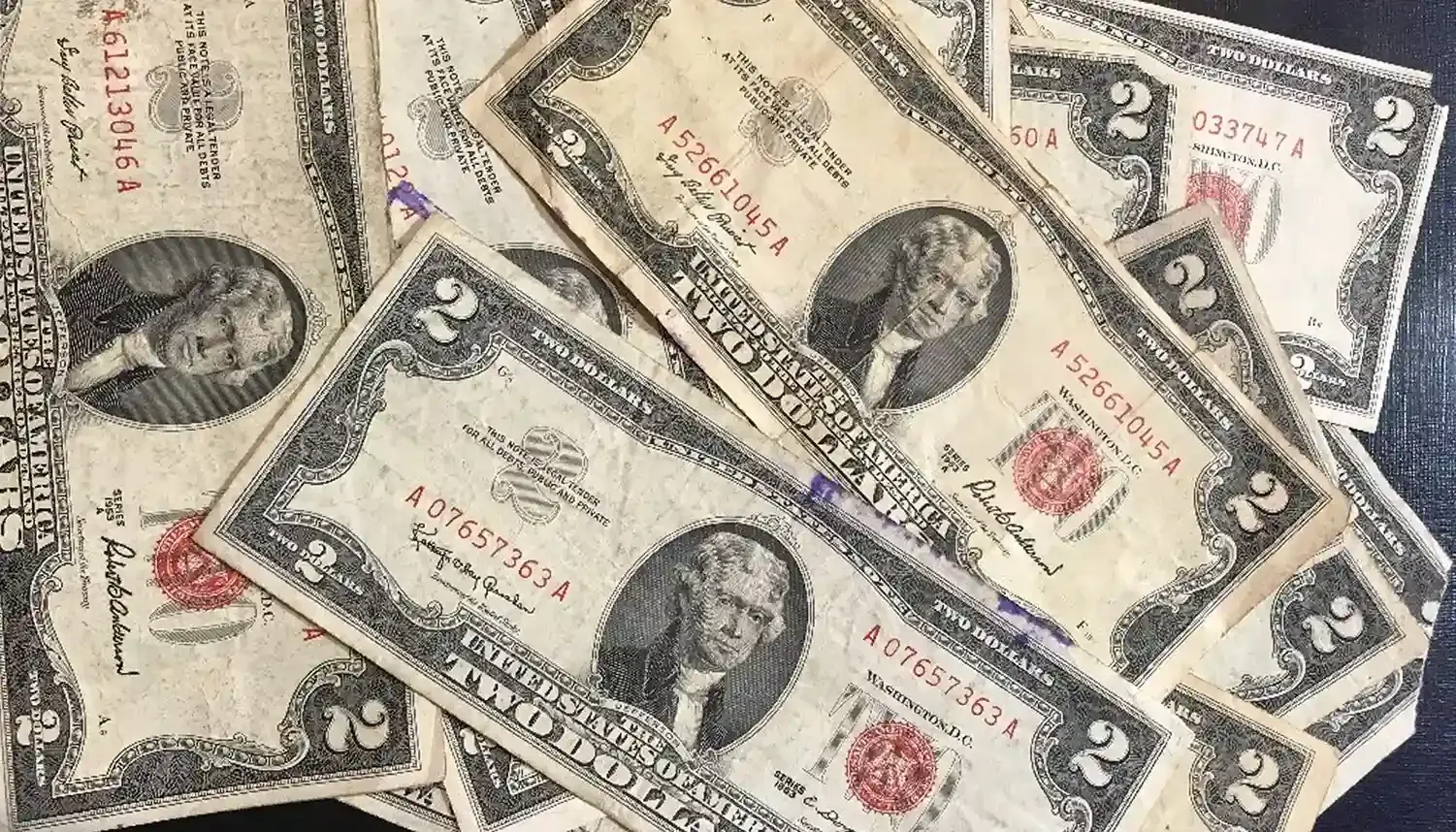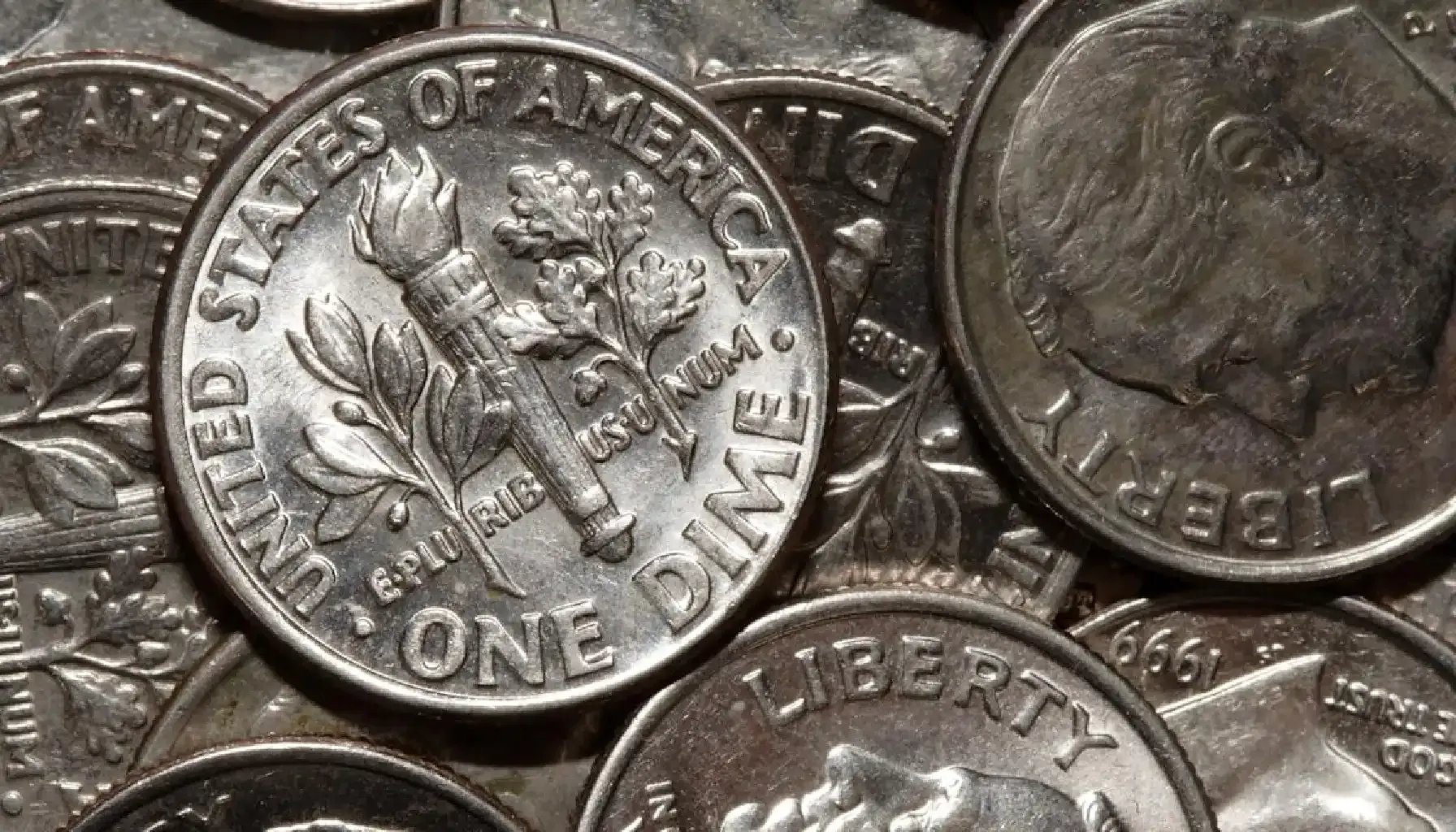Contents:
- Step 1. Unlocking the Secrets of Grading: What It Is and Why It Matters
- Step 2. Thoroughly Examine the Morgan Silver Dollar Grading Chart: Categories to Consider
- Step 3. Self-Assessing Coin Condition: A Step-by-Step Process
- Step 4. Self-Assessing Coin Condition: Technological Tools
- Step 5. Evaluate the Impact of Grading on Market Value: Morgan Dollar Grading Chart
- Step 6. Remember the Rule: Successful Grading – Successful Collecting
The Morgan dollar is one of the most recognizable and respected coins in American numismatics. Its minting began in 1878 and continued until 1904 (with a brief revival in 1921). This dollar represents a period and can be both a historical find and a lucrative investment. The Morgan dollar is not only a formerly used means of payment but also a significant piece of history, but how do you determine its true value? The answer lies in properly assessing the coin's condition - grading.
Grading Morgan Dollars to know its value is not a simple task, it is a skill and an ability requiring a lot of time and practice to perfect. Especially if you want to buy one as a collector gift. Please note that, basically, the grading of a coin is your opinion of its value, and other experts in the industry must agree (but the agreement of others is not always guaranteed, especially if the value of a coin in one grade is significantly higher than its value in another).
The grading process cannot be an exact science or result, applying a single correct and precise method of grading that leads to one single result. “But how to grade a morgan silver dollar then?” - you ask. The answer lies in the specific definitions, descriptions and specialized scales that are agreed upon by numismatists and collectors to accurately characterize and estimate coins.

Here we will outline the basic steps for grading Morgan silver dollars to enable you to accurately grade the coins and determine its market value based on the grade.
Step 1. Unlocking the Secrets of Grading: What It Is and Why It Matters
Grading is the process of assessing the condition of a coin and is used to determine its preservation and hence its market value. The most popular coin grading system is the Sheldon Scale. This is what will help you get your morgan silver dollars graded, i.e. determine the condition of the coin on a scale of 1 to 70 (where 1 is a barely recognizable coin and 70 is a perfect, completely untouched coin).
Basic Coin Valuation Parameters:
The wear is a key factor in determining a coin's grade. The less wear, the higher the grade.
Integrity of detail - Fine details, e.g., hairlines in a portrait of Liberty or feathers on an eagle, help determine the grade.
Damage - scratches, bumps, dents and other physical defects can greatly reduce a coin's grade.
Luster and patina - coins with natural luster or patina are often valued higher.
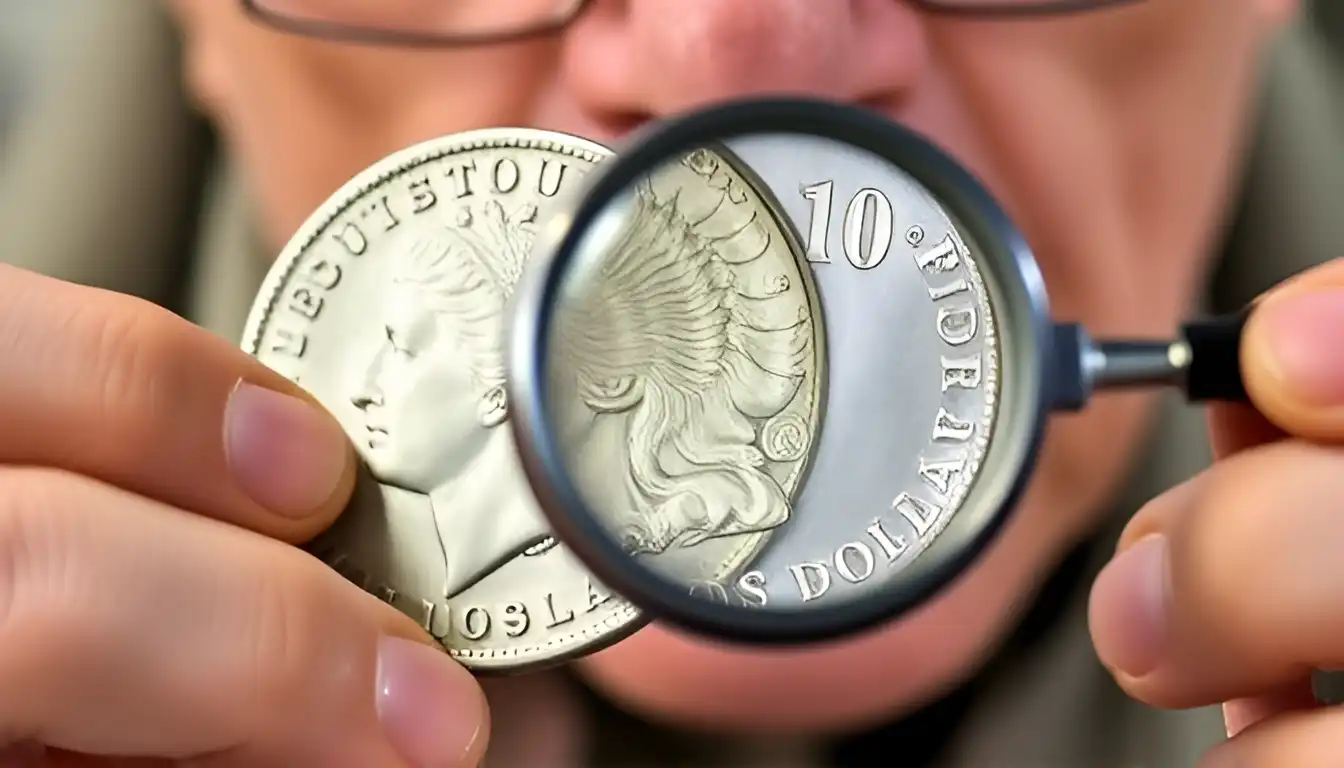
Step 2. Thoroughly Examine the Morgan Silver Dollar Grading Chart: Categories to Consider
Morgan dollar grading occurs in a number of categories, i.e. grades. The higher the grade of a coin, the better its condition and thus the higher its value on the market. Please refer to the Morgan dollar grading table below to help you navigate the coin's condition.
Morgan dollar coin grading scale:
Grade | Description to Focus | Availability of This Grade and Approximate Value of Morgan Dollar |
PO-1 (Poor) | Barely recognizable, heavy wear. Most of the design elements are erased. | Extremely rare for a Morgan Dollar, as these coins are usually preserved in better condition. Value is low, but coin is interesting as a rarity. |
FR-2 (Fair) | Heavily worn, but major design elements are visible. | It is rare. Value is low, mainly attracting collectors gathering the complete series by grades. |
AG-3 (About Good) | The wear is severe, but the basic contours are still discernible. | Rarely on the market for a Morgan Dollar, but occasionally attracts collectors. Value is below average. |
G-4 (Good) | The major elements are visible, but small details are obliterated. | Often found among Morgan Dollars of early issue years. Below average value, but the coin is interesting for beginning collectors. |
VG-8 (Very Good) | Lots of wear, but details are still discernible, including small elements. | Fairly common among older Morgan Dollar issues. Value is average. |
F-12 (Fine) | The outlines of the details are evident, but wear is noticeable. | Occurs frequently, especially for standard minting years. Medium value, attractive for the mass market. |
VF-20 (Very Fine) | There is some wear, but most of the small parts are intact. | Popular among collectors as small elements are still visible. Above average value, especially for rare dates and coins with interesting stamping errors. |
EF-40 (Extremely Fine) | Minor wear, small elements and details visible. | Often found on the market. High value for most Morgan Dollars, especially for popular years. |
AU-50 (About Uncirculated) | Light wear, near perfect condition. | Rare enough for most years of issue. High value, as the coin was practically unused. |
MS-60 to MS-70 (Mint State) | The coin has never been in circulation. MS-70 is an absolutely perfect coin. | Very rare in these conditions, especially in the higher grades. Value is very high, especially for rare years and coins with good luster. |
Step 3. Self-Assessing Coin Condition: A Step-by-Step Process
Properly assessing the condition of a coin is an important skill for every collector. You will need a few tools and practical tips to help you accurately determine the grade and finally receive a graded morgan silver dollars value.
You need:
A 5x or 10x magnifying glass for close inspection of the coin.
Bright, natural light.
A clean work space to avoid accidental damage to the coin.
Examples for comparison are images of coins with different grades.
How to act:
Examine the coin under a magnifying glass. Morgan dollars are large and heavy silver coins (silver is a soft and malleable metal, and the large size of the Morgan dollar makes it difficult to fully mint the design). So, when grading coins, pay particular attention to the quality of the minting. Pay attention to high points of relief, e.g., Lady Liberty's hair and the eagle's breast. These areas are the first to wear off, so their condition is important for grading.
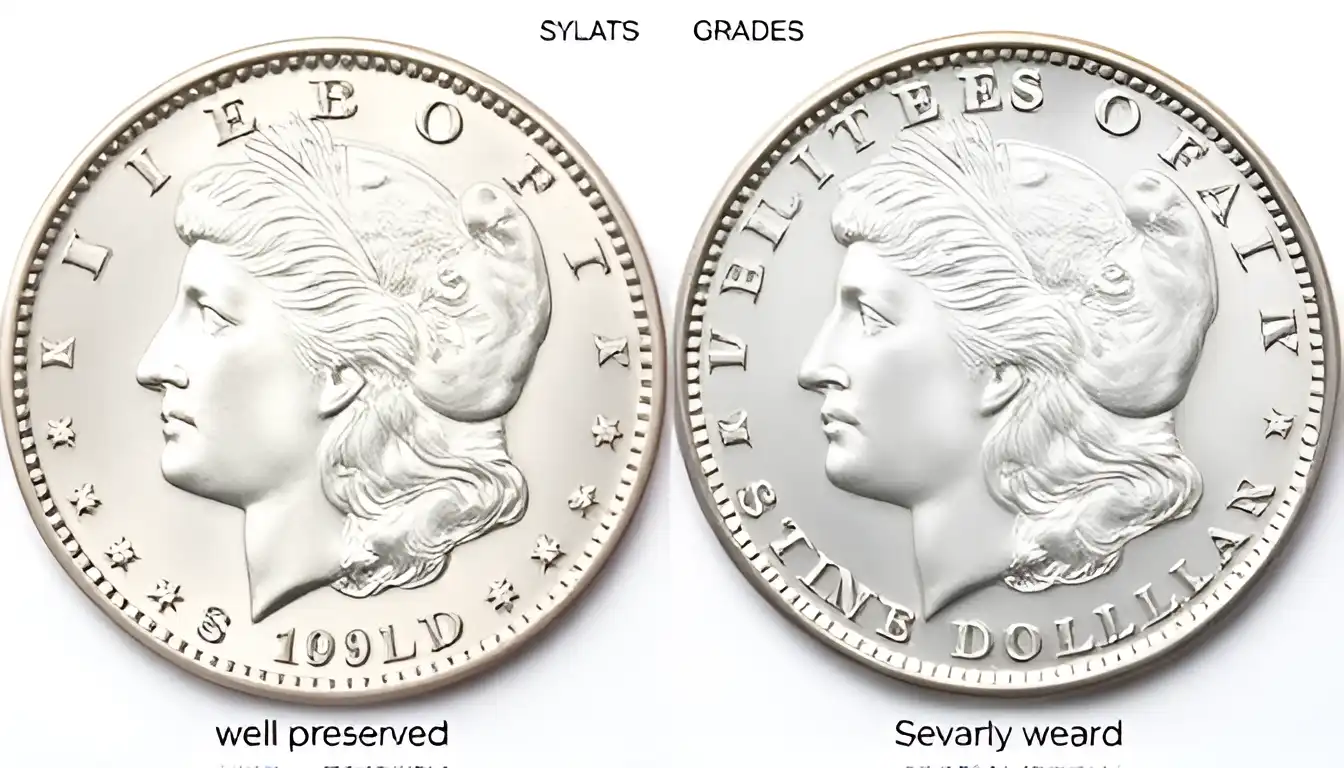
Examine the damage. Scratches, bumps, and dents can significantly lower the grade. If a coin has deep scratches or impact damage, it will receive a lower grade.
Evaluate the luster (glossing). A coin's original luster (especially on uncirculated specimens) is an important indicator of its condition. A coin without luster also has a lower grade.
Compare with Examples. Comparing your coin to Morgan Dollar images at various stages of wear will help you more accurately determine its grade.
Step 4. Self-Assessing Coin Condition: Technological Tools
Modern technology makes life easier for the modern man, and the sphere of collecting is no exception. Grading a Morgan silver dollar is now convenient and accessible due to modern digital tools like Coin ID Scanner app (https://coin-identifier.com). Now you have access to initial coin grading quickly and with minimal effort.
How does the Coin ID Scanner work?
The Coin ID Scanner app uses your smartphone's camera to instantly recognize a coin, determine its denomination, year of issue, condition and estimated value. All you need to do is:
Launch the application and select the coin scanning function (or upload a ready coin photo to the app).
Scan the coin by following the app's simple instructions for best results.
The app automatically analyzes the image, comparing it to an extensive database, offering information about the coin's possible condition and its value on the market.
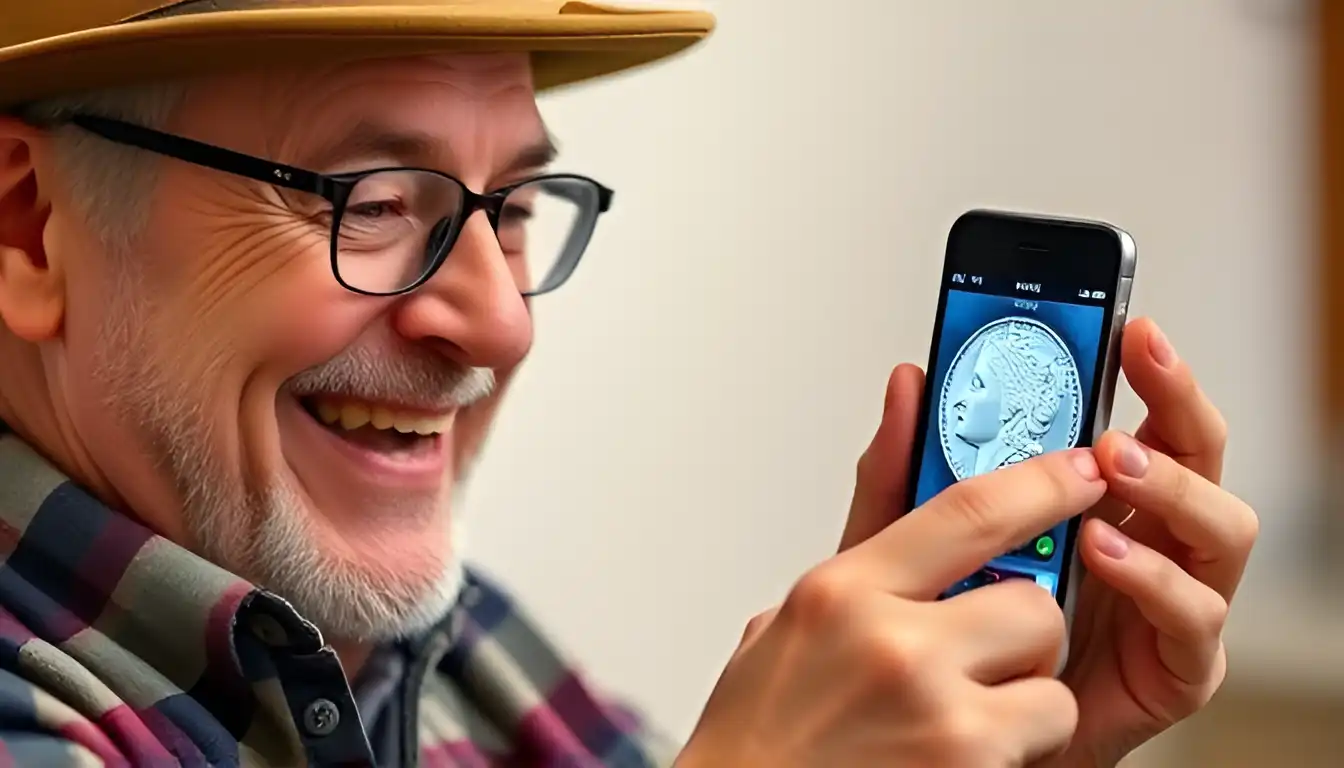
Why Coin ID Scanner Instead of Other Evaluating Methods?
You no longer need to manually research and compare the coin with various reference books. The app instantly displays all the necessary data right on the screen. Additionally, the app is updated regularly, adding new coins and improving the grading algorithms.
Using modern technology to evaluate coins helps you avoid mistakes, save time and stay on the cutting edge. Coin ID Scanner offers you the opportunity to be always in touch with the market and receive information quickly. Even though the final certification should still be done by professional organizations, an initial evaluation with Coin ID Scanner is a great start on the road to making the right choice.
Step 5. Evaluate the Impact of Grading on Market Value: Morgan Dollar Grading Chart
As we mentioned above, the main purpose of grading a coin is to determine its value and current market value. The difference between two neighboring grades can be significant, especially for rare or particularly valuable Morgan Dollar pieces.
Morgan silver dollar grading examples:
Year of Issue and mint | G-4 (Good) | VG-8 (Very Good) | EF-40 (Extremely Fine) | MS-65 (Mint State) |
1881-S | $50 | $75 | $200 | $500 |
1884-CC | $200 | $350 | $1000 | $2500 |
1893-S | $3000 | $5000 | $50,000 | $500,000+ |
Why it is important:
Understanding grading helps collectors make informed decisions when buying or selling coins. Coins in higher grades appreciate significantly at auctions and among investors. For those building a collection, it is important to know that the rarity of a coin combined with high grading can turn even a “plain” coin into an expensive artifact.

Step 6. Remember the Rule: Successful Grading – Successful Collecting
Grading coins, commemorative, circulated and other ones, is an art and a science at the same time, and any collector skilled in this craft is almost a magician. Due to understanding the principles of grading and knowing the market factors you will be able to build impressive collections, as well as make profitable investments.
Don't be afraid to use technological tools, contact professionals for clarification and certification, and learn by doing, because practice makes perfect. So, evaluate and collect boldly and enjoy the process!

